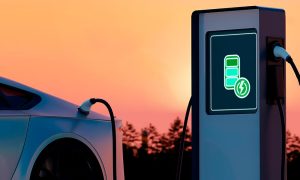Latam Green, the largest sustainability community in Latin America, organized the Climate Economy Forum – PreCOP28 virtually in order to address important issues in the face of global sustainability goals, which will also be discussed during the annual meeting of the United Nations.
The meeting was a space for the exchange of ideas and solutions to the environmental and economic challenges facing Latin America. In this context, the panel “Power to move: Value chain of sustainable mobility from energy” was led by moderator Kathy Ardila, Business Leader of Invest in Latam, who deployed her experience to guide the enriching debate that lasted just over an hour.
Under her direction, the conversion included Ricardo Garro, Global Key Account Director (Latam Market) of Huawei, Javier Silva, Sustainability and Solar Community Relations Manager of SQM, Luis Felipe Vélez, Commercial Vice President of Celsia, and Francis David, Commercial Manager of Copec Voltex.
Technology and Sustainability
Today, technology and sustainability are converging to shape the future, and there, Huawei’s presence figures in the evolution of the energy sector. As Global Key Account Director for the Latin American market, Ricardo Garro focuses on leading the Huawei Digital Power division, a lesser-known but crucial facet of the Chinese company.
To understand the role in this paradigm shift, it is essential to know the context. Huawei, globally recognized in telecommunications, took a step forward a few years ago by establishing a new company focused exclusively on addressing energy challenges.
“We embarked on a journey from digital transformation to solutions in solar power, inverters and batteries, to engaging in mobility solutions globally,” says Garro.
In this journey, they have developed residential chargers, or even, a cutting-edge product line called “DriveONE”, the latter of which is presented as a comprehensive platform of power electronics solutions aimed at vehicle manufacturers, with residential chargers and fast charging line.
“What perhaps few people know is that Huawei, in the last five years, has established itself as one of the top four companies worldwide in research and development investment, surpassing even recognized giants such as Google, Amazon and Facebook, with an investment exceeding $20 million,” he continued.
Now, from his perspective, he observes the exponential growth of electric mobility in Latin America, committed to being an active part of this change, contributing experience and technology to make electric mobility an accessible and efficient reality in the region.
“Among the jewels in our technological crown is a revolutionary, liquid-cooled, 600 kW capacity charger that can charge a 200 km range in just 5 minutes. This breakthrough is not only incredible from a technological standpoint but also represents our vision for a faster and more sustainable future,” he said.
As such, Huawei is working closely with strategic partners, providing the technology needed to accelerate the adoption of innovative solutions in the energy sector with residential chargers that employ artificial intelligence and direct charging from solar sources, they feature as enablers of faster, more reliable and sustainable options for all.
Sustainable Lithium Extraction
Javier Silva, SQM’s Sustainability and Solar Community Relations Manager, highlighted Chile’s importance in the electric car production chain, starting with lithium extraction, where they are leaders.
Their focus is on achieving lithium production with zero emissions and a minimal water footprint, thus contributing to the sustainability of the chain and recognizing his company’s responsibility in this process.
Silva highlighted SQM’s ambitious goals in terms of production, in social and governance areas, recognizing the need for enabling conditions for the development of the mineral industry, underlining the importance of collaboration with communities and commitment to sustainable development.
“Investments in institutions and partnerships with universities in northern Chile are part of SQM’s commitment to clean and sustainable lithium production. The relevance of the mineral industry for the environment is key, where SQM is the largest lithium processor worldwide,” he commented.
On the other hand, he stressed the need to produce large volumes to supply the growing global demand for lithium, but at the same time, he outlined the company’s ambition to progressively reduce brine withdrawals, with the goal of achieving a 50% reduction by 2030.
He also highlighted the company’s current efforts, which has already achieved a 23% reduction. Finally, SQM’s commitment to public perception and health is also important, referring to the challenge of increasing production while decreasing extractions, and noting that this challenge involves continued investment in research, development and technology.
Celsia’s Future in Energy
As Celsia’s Commercial Vice President, Luis Felipe Vélez shared the company’s evolution and commitment in the energy sector, highlighting its presence in Colombia (soon in the city of Boyacá), Costa Rica, Honduras and Panama, as well as its incursion into Peru.
The executive recounted how, a few years ago, the company began to question its role in the future of energy, identifying four important aspects: carbonization, reality, SDGs and corporate responsibility. The latter drove the initiative to work on electric mobility from scratch, becoming pioneers and promoting the use of electric vehicles in Colombia.
Thus, Vélez highlighted the diversity of fronts they have addressed in the development of electric mobility, bus procurement and implementation of essential infrastructure. The company has gone through all stages (purchase of buses, import of vehicles and introduction of two-seater vehicles).
Currently, the focus is on developing the necessary infrastructure to make electric mobility a reality in the region, stressing that infrastructure is not limited to connection, but also encompasses energy supply.
Celsia’s commercial vice president shared the achievements to date, such as the installation of 22 fast charging stations in Colombia’s main cities and ports, with plans to reach 30 in the next year, highlighting the importance of seeding the infrastructure to boost mobility between cities and prepare for the future of medium or heavy charging.
He also highlighted Celsia’s commitment to collaborate with the public sector and transportation companies to facilitate the transition to electric mobility. Knowing that it has already worked extensively in projects of this type, such as Transmilenio in Bogota.
Finally, in terms of mobility within cities, Velez mentioned collaboration with mass consumer delivery companies and medium-sized companies seeking to implement public charging solutions for shared-use vehicles.
Necessary Transformation
Francis David, Copec Voltex’s Commercial Manager, revealed a significant transformation in the company’s vision and mission over the past year. The company, previously focused on fuel sales, has evolved into a broader focus, recognizing its role in driving development and mobility in Chile and other Latin American regions, such as Colombia and Peru.
This strategic evolution led to the birth of the Copher Voltex brand, which has positioned itself as an energy company committed to driving new forms of mobility. A decade ago, the brand emerged with the purpose of contributing to charging solutions that would facilitate the development of electromobility.
Since then, the company has been a pioneer in the installation of charging points, reaching 1,000 points this year for a total of 1,500 between public and private.
Thus, it has the necessary experience to be a key partner of electric public transport in Chile, which has achieved worldwide recognition with the operation of 2,500 electric buses in Santiago and the upcoming expansion to Antofagasta.
In that sense, the company supplies 100% renewable energy to these terminals while at the same time actively participating in their design, construction, implementation and maintenance.
David also raised the importance of electric public transport as a means to democratize electromobility, benefiting a large number of people who use this service in Santiago.
On the other hand, he emphasized the importance of a renewable energy matrix to support the growth of electromobility, recognizing the significant advances in Chile towards renewable sources.
The abundance of solar energy in the north and cross-cutting wind energy throughout the territory provide a solid foundation for a successful transition to renewable energy. Finally, however, he highlighted a key challenge: energy storage. The ability to store large amounts of generated solar energy is essential to ensure the stability and security of the energy matrix.







